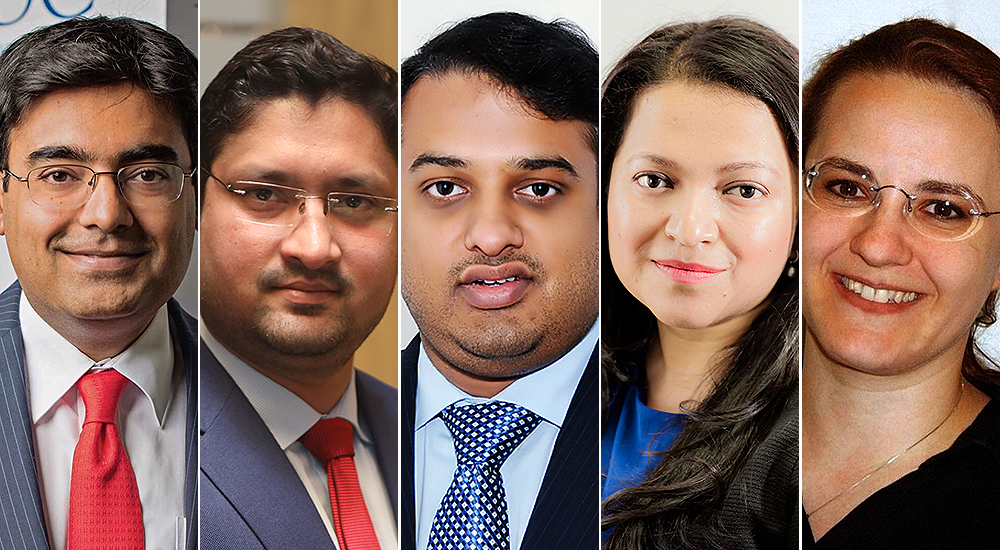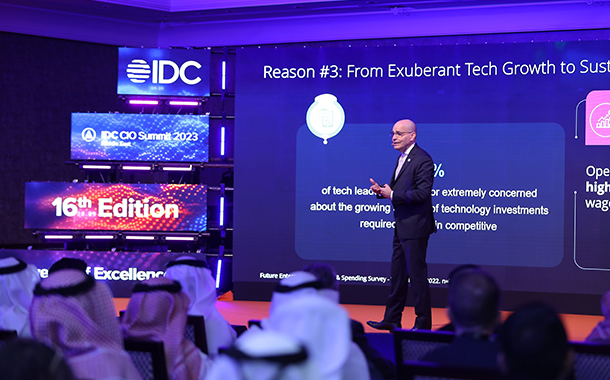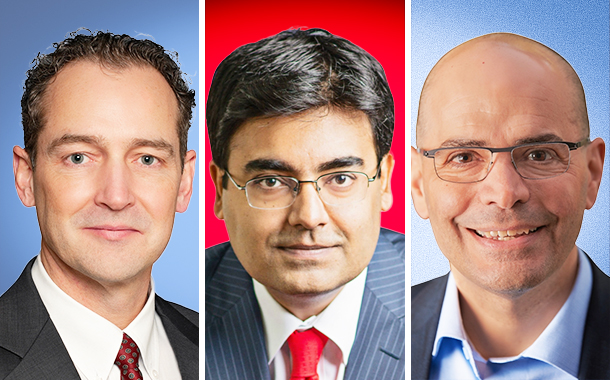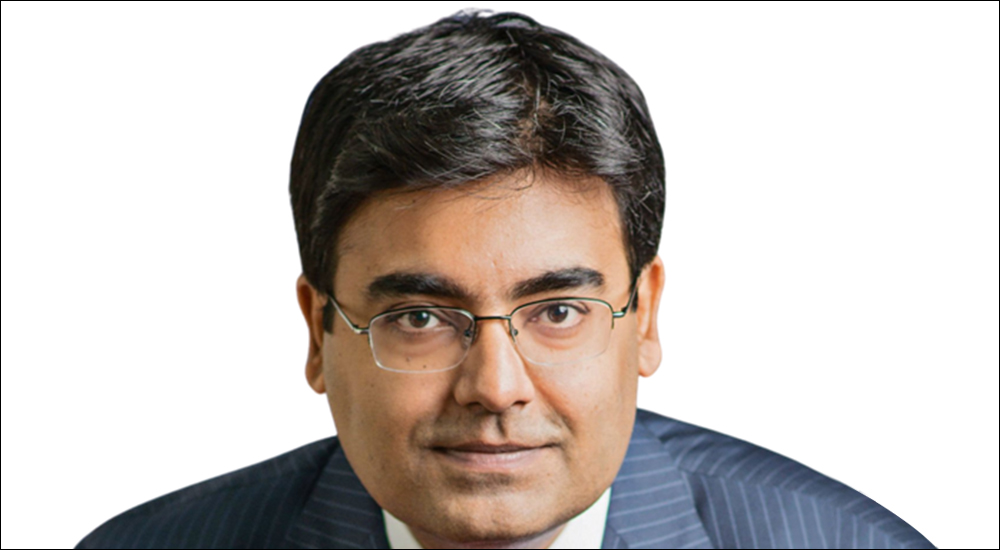The ICT industry is entering the 2nd chapter of the 3rd Platform era, built on technologies and business models that will dramatically accelerate and scale digital innovation, said IDC’s Chief Research Officer and Executive Vice President for Worldwide Products, Crawford del Prete. The META region finds itself at the DX tipping point and is well poised to accelerate its adoption of 3rd Platform technologies like cloud and big data analytics, as well as highly disruptive innovation accelerators such as the Internet of Things, artificial intelligence, cognitive systems, robotics, augmented virtual reality, 3D printing, and blockchain. The emergence and widespread adoption of these technologies will accelerate innovation and transform the ICT landscape as we know it.
Jyoti Lalchandani, IDC’s Group Vice President and Managing Director for META, supported del Prete’s hypothesis by explaining that annual spending on 3rd Platform technologies cloud, big data, mobile, and social in the region will surpass $176 billion by 2021, with a new wave of innovation accelerators generating an additional $27 billion in annual revenue by the same year.
Overall spending on information and communication technology in the Middle East, Turkey, and Africa is set to grow 2.5% year on year in 2019 to reach $213 billion, according to IDC. Developing an effective digital transformation platform that can sustain, advance, and scale business operations may be the most important task facing the region’s decision makers.
According to IDC, the Middle East, Turkey, and Africa region will see annual spending on digital transformation initiatives cross the $20 billion mark by end of 2018. IDC expects digital transformation spending across the META region to cross the $25 billion mark in 2019 and that figure is only going to increase over the coming years as more and more organisations experiment with transformative technologies such as robotics, artificial intelligence, and the Internet of Things in a bid to spur innovation and revolutionise their customer experience.
IDC expects this regional figure to more than double over the coming years, passing $40 billion by 2022 as the pursuit of game-changing innovation accelerates to keep pace with evolving customer demands.
As digital transformation continues to reshape the global economy, innovation will multiply, platform wars will intensify, and data will increasingly be used for competitive advantage. With market leadership ranks being disrupted, a new ICT world order is taking shape, built around innovative technology offerings, evolving business models, and emerging transformation use cases. Given this unprecedented disruption, it is imperative that organisations make the right decisions today to ensure they remain competitive tomorrow.
By 2020, IDC expects at least 55% of the world’s organisations to be digitally determined, transforming markets and re-imagining the future through the implementation of new business models and the provision of digitally enabled products and services. And with global digital transformation investments forecast to total $5.9 trillion for the three years between 2018 and 2021, this topic continues to be a central area of business leadership thinking.
89% of organisations in the Middle East and Africa now view digital transformation as being central to their corporate strategies, according to IDC. In today’s world, digital transformation has attained a macroeconomic scale and impact, becoming the core of what industry leaders do and how they operate, said Jebin George, IDC’s Programme Manager for Industry Solutions in the MEA region.
As digital-native enterprises continue to disrupt traditional customer-engagement models with their pioneering automation and intelligence capabilities, established enterprises must become digital native in the way they think and act, transforming their organisations through the establishment of core digital competencies in the areas of leadership, relationships, information, operation, and talent.
Some of the key findings are outlined below:
- The quest to scale digital businesses will lead to organisations in META adopting a cloud-first or cloud-only approach, with spending on public cloud services topping $1.1 billion in 2018.
- Despite crossing the $2.4 billion mark in 2018, security spending in META will continue to be insufficient due to the increasingly complex nature of threat landscape.
- Consumer IT spending in META will total $42.9 billion in 2021, with mobile phones contributing 80% of the value. AI chips and augmented-reality capabilities will be crucial features of all flagship smartphone launches in 2018.
- 2018 will be a breakout year for IoT as it starts to become mainstream, with IoT spending in META growing at a CAGR of 19% over the coming years to reach $12.6 billion in 2021.
- Spending on big data and analytics solutions in the META region will tip the scales at $2.4 billion in 2018.
- By 2021, 30% of enterprise clients across META will require an integrated workflow and digitisation solution.
Regional IoT market
The Middle East and Africa Internet of Things market is set to grow 15% year on year in 2018, according to IDC. The latest forecast shows MEA spending on IoT reaching $6.99 billion in 2018 and $12.62 billion by 2021 as organisations ramp up their investments in the hardware, software, services, and connectivity that enable IoT solutions.
IoT adoption in the MEA region is expected to accelerate over the coming year as organisations from both the public and private sectors increasingly digitalise their businesses in a bid to automate their operations and ramp up productivity, says Wale Babalola, Research Analyst for Telecommunications and IoT at IDC MEA. As organisations increasingly realise the added value that is provided by IoT, we can expect to see further development of innovative industry-specific solutions.
Totaling $2.48 billion, IoT services is forecast to be the market’s largest technology category in 2018, with the majority of this total going towards ongoing services, IT services, and installation services. Hardware will be the second-largest technology category, followed by software and then connectivity. The vast majority of hardware spend 85% will go towards modules and sensors. Meanwhile, software will be market’s fastest growing category over the coming years, with spending in this area increasing at a compound annual growth rate CAGR of 21.3% over the 2016–2021 forecast period.
The industries that are expected to spend the most on IoT solutions in 2018 are manufacturing $1.07 billion, transportation $0.85 billion, cross industries $0.76 billion, utilities $0.75 billion, and consumer $0.68 billion. Manufacturers will direct most of their IoT spending over the coming 12 months towards solutions that support manufacturing operations and production asset management. Over in the transportation sector, fleet management and freight monitoring will account for up to 78% of IoT spending in 2018.
In the cross industries category, which represents use cases common to all industries, IoT spending will largely focus on smart buildings and connected vehicles. Smart grids for electricity will account for a little over 82% of total IoT spending in the utilities sector, while around 50% of consumer IoT spending will be driven by investments around smart buildings.
The IoT use cases that IDC expects to attract the largest investments in 2018 are smart grid electricity $0.62 billion, manufacturing operations $0.57 billion, freight monitoring $0.52 billion, smart home $0.41 billion, and remote health monitoring $0.40 billion. IDC forecasts manufacturing operations to overtake smart grid electricity into top spot by 2021. The use cases that will see the fastest spending growth over the 2016-2021 forecast period are insurance telematics 32.4% CAGR, smart buildings 31.4% CAGR, airport facility automation 30.5% CAGR, in-store contextualised marketing 28.8% CAGR, and electric vehicle charging 28.3% CAGR.
The growing implementation of initiatives that leverage digital solutions will continue to fuel IoT adoption over the coming 12 months, particularly in Saudi Arabia and the UAE, says Babalola. As such, these two countries combined are expected to contribute $1.57 billion of the MEA region’s total IoT spending of $6.99 billion in 2018.
Smart cities
IDC has expanded its Worldwide Semiannual Smart Cities Spending Guide to include more than 100 cities and 30 use cases. The additional coverage is designed to provide deeper insight into smart cities investment priorities, programs, and use cases. In a new update to the Spending Guide, IDC forecasts worldwide spending on smart cities initiatives to reach $95.8 billion in 2019, an increase of 17.7% over 2018. Singapore, New York City, Tokyo, and London will each invest more than $1 billion in smart cities programs this year.
The smart cities market is extremely dynamic, and while only a small number of cities have the budget for large scale integrated projects, our database of 100 cities, which includes most of the largest capitals and innovative cities around the world, only represents around one quarter of global smart city spending, said Serena Da Rold, Programme Manager in IDC’s Customer Insights and Analysis group.
There is a long tail of cities focusing on specific issues or looking for cross-departmental transformation on a smaller scale. These cities represent a big opportunity for providers of smart city solutions that can be replicated and adapted to address specific use cases in different cities, leveraging the experience gained in a similar context.
Initiatives related to data-driven public safety, intelligent transportation, and resilient energy and infrastructure will attract the largest share of funding in 2019, but key use cases in the areas of economic development and civic engagement, and sustainable planning and administration will also see considerable investments.
The smart cities use cases that will receive the most funding in 2019 include fixed visual surveillance, advanced public transit, smart outdoor lighting, intelligent traffic management, and connected back office. Together, these five use cases will represent 34% of worldwide spending this year.
Strong investment growth in intelligent traffic management solutions will make it the third largest use case in 2020, overtaking smart outdoor lighting. The use case that will see the fastest spending growth over the 2017-2022 forecast period is officer wearables, which includes smart apparel, smart headsets and glasses, and smart holsters. Other use cases that will experience significant spending growth include digital twin and vehicle-to-everything V2X, connectivity.
On a geographic basis, the Asia Pacific region represents over 40% of total spending on smart cities initiatives, while the Americas represent around one third, and Europe, Middle East and Africa around one quarter of the global opportunity. Alongside the big picture provided by the regional distribution of spending, city-level detail provides a useful measure of national commitment. In the United States, for example, only four cities, New York, Los Angeles, Washington DC, and Chicago, are forecast to spend more than $300 million on smart cities programs this year. In comparison, eleven cities in China will exceed the $300 million level in 2019.
In the Asia Pacific region, the exponential growth and diversity of smart city initiatives in second and third-tier cities are continually challenging many first-tier cities to transform. With competition for talent and foreign direct investment being even more intense today, these socioeconomic hubs provide huge openings for solution providers to aid in seamless connectivity and collaborations, enhanced productivity and automation, as well as address security and privacy concerns,” said Gerald Wang, Head of IDC Asia Pacific Public Sector research.
Cognitive and artificial intelligence
Spending on cognitive and artificial intelligence systems in the Middle East and Africa will grow an impressive 31.8% in 2017. The Worldwide Semiannual Cognitive Artificial Intelligence Systems Spending Guide indicates that the region’s investment in this space will total $37.49 million for 2017, with the market tipped to reach $114.22 million in 2021, representing a CAGR of 32.0% for the 2016-2021 period.
In terms of the technologies used in cognitive AI implementations, software will continue to account for the largest portion of the investment in 2021 at 44.7%, followed by IT and business services at 35.0%. However, the IT and business services segment will grow at a much faster rate over the course of the forecast period, with IDC projecting a CAGR of 49.0% for this space versus 27.7% for software. Hardware will account for the remaining 20.3% of spending on cognitive AI implementations in 2021, with this segment growing at a CAGR of 23.8%.
Given the exponential growth we are seeing in data volumes, organisations across the region are increasingly looking to leverage solutions that can help improve the efficiency and productivity of their employees, says Megha Kumar, IDC’s Research Director for Software in the Middle East, Africa, and Turkey. To that end, cognitive AI systems can play a key role in helping to automate and augment processes, which is why we expect to see sustained growth in spending on such solutions over the coming period.
The use of cognitive AI systems will see significant growth across all industries, although IDC’s research suggests the biggest opportunity lies in the financial sector, where an estimated $28.32 million will be spent on cognitive AI solutions in 2021, accounting for a quarter of overall spending. This will be followed by the public sector including government, education, and healthcare with 19.8% share and manufacturing with 14.1%. IDC expects the fastest growing use cases to be defense, terrorism, investigation, and government intelligence; automated customer service; and fraud analysis and investigation.
Cognitive systems will increasingly utilise natural language processing, content aggregation, and machine learning to enable applications for a wide range of use cases. At the consumer level, we are already seeing this with the likes of Apple’s Siri, Microsoft’s Cortana, Amazon’s Alexa, and Google Now, and such intelligent agents will become increasingly common in the enterprise setting as well. Indeed, we are already seeing this in action in the UAE, where cognitive assistants called Eva and Rashid have been deployed by Emirates NBD and Dubai’s Department of Economic Development, respectively.
Of all the countries in the MEA region, the UAE is clearly a pioneer when it comes to the use of cognitive AI systems. Cementing this position, the country’s government recently launched the UAE Strategy for Artificial Intelligence, which aims to provide a comprehensive framework for the use of AI across various different sectors and services. At IDC, we expect this initiative to fuel demand for a new range of skills and services within the country over the coming years.
As the open banking movement gathers momentum and the use of artificial intelligence continues to proliferate across the industry, 25% of financial institutions worldwide will be capable of processing transactions initiated by third-party digital personal assistants by 2022. The banking and finance sector is being redefined by the rise of AI, automation, blockchain, and fintech.
While standards of service previously differentiated one financial brand from another, it is the provision of a compelling digital experience that now separates the industry’s winners and losers. As such, financial institutions across the region must look to redesign their customer interactions and seamlessly integrate physical and digital elements to deliver hyper-personalised services that truly set them apart from the competition.
Business applications
Spending on business intelligence and analytics software in the United Arab Emirates is set to reach $42.24 million in 2018, reflecting strong year-on-year growth of 7.7%, according to IDC. IDC expects spending on end-user query, reporting, and analysis software to account for around 53% of the market’s value this year, with advanced and predictive analytics software accounting for the remainder.
The finance and government sectors will continue to be the biggest spenders, although healthcare, utilities, and retail will be among the fastest growing vertical markets over the forecast period. Business intelligence and analytics solutions are of paramount importance to organisations in the UAE, says Manish Ranjan, Programme Manager Software META, IDC.
As competition intensifies, organisations are increasingly looking to leverage analytical insights to help them make better business decisions, improve their understanding of customer preferences, and deliver enhanced customer experiences. These competitive demands, together with efforts to reduce customer churn and an increasing acceptance of cloud-based applications, will be key drivers of the UAE BI and analytics market’s growth over the coming years.
IDC’s research shows that the UAE BI and analytics market reached a value of $39.24 million in 2017, with the growth of cloud-based BI and analytics solutions far outpacing the growth of on-premise deployments. IDC expects to see a continuation of this trend over the course of the forecast period as digital transformation initiatives continue to proliferate across the country.
Cloud-based deployments of enterprise application solutions have steadily risen across the UAE market in recent years due to the flexibility, scalability, and cost benefits they offer. While most of the market’s revenue is currently generated from on-premise software, cloud deployments are growing at a much faster pace. Given the strong demand for software as a service and cloud-based BI solutions that are not only easy to use but also simple to acquire, install, and maintain, vendors should look to invest in expanding the functionality of their product offerings.
Spending on enterprise application software in the Middle East and North Africa is set to reach $774.62 million this year, reflecting year-on-year growth of 6.3%. The Gulf countries, particularly Saudi Arabia and UAE, continue to dominate spending in the market as they push ahead with their countrywide digital transformation initiatives. Shrinking budgets are forcing organisations across the region to shift from capex to opex business models, and this shift has spurred an increase in the adoption of cloud-based EAS solutions over the last couple of years, a trend that is set to accelerate over the coming years.
The market has responded positively to ongoing national development plans and the continuous investments of EAS vendors across the region, with cloud-based EAS solutions gaining considerable traction in 2017. This is also greater demand for intelligent ERP solutions that come with embedded analytics and AI functionalities. Given the plethora of digital transformation initiatives underway across the region, the market for cloud-based EAS solutions will continue to expand in MENA, with government, transportation, healthcare, and utilities set to be among the fastest growing verticals in terms of EAS investments through 2022.
IDC’s research shows that the overall MENA EAS market reached a value of $728.70 million in 2017, representing year-on-year growth of 6.3%. SAP was once again the market leader in 2017, followed by Oracle in second place and Microsoft in third. Together, these three vendors accounted for a combined market share of 82.0%.
Datacentre investments in the region continue to grow as vendors prepare themselves to address growing cloud demand and the spread of digital transformation initiatives. Both tier 1 and tier 2 vendors will continue to push cloud-based applications with embedded analytics and AI functionality in the market, and this will help cloud-based EAS solutions grow at a much faster rate than traditional on-premise solutions.




















